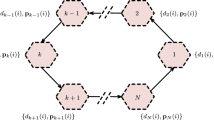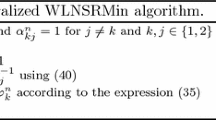Abstract
In traditional distributed power control (DPC) algorithms, every user in the system is treated in the same way, i.e., the same power control algorithm is applied to every user in the system. In this paper, we divide the users into different groups depending on their channel conditions and use different DPC accordingly. Our motivation comes from the fact that different DPC algorithms have its own advantages and drawbacks, and our aim in this paper is to “combine” the advantages of different DPC algorithms, and we use soft computing techniques for that. In the simulations results, we choose Foschini and Miljanic Algorithm in [3], which has relatively fast convergence but is not robust against time-varying link gain changes and CIR estimation errors, and fixed step algorithm of Kim [3], which is robust but its convergence is slow. By “combining” these two algorithms using soft computing techniques, the resulting algorithm has fast convergence and is robust.
Similar content being viewed by others
Explore related subjects
Discover the latest articles, news and stories from top researchers in related subjects.Author information
Authors and Affiliations
Corresponding author
Additional information
Acknowledgments This work was supported in part by GETA (Finnish Academy Graduate School on Electronics, Telecommunications and Automation), Finland.
Rights and permissions
About this article
Cite this article
Uykan, Z., Koivo, H. Soft-computing combining of distributed power control algorithms. Soft Comput 9, 94–100 (2005). https://doi.org/10.1007/s00500-003-0351-6
Published:
Issue Date:
DOI: https://doi.org/10.1007/s00500-003-0351-6




